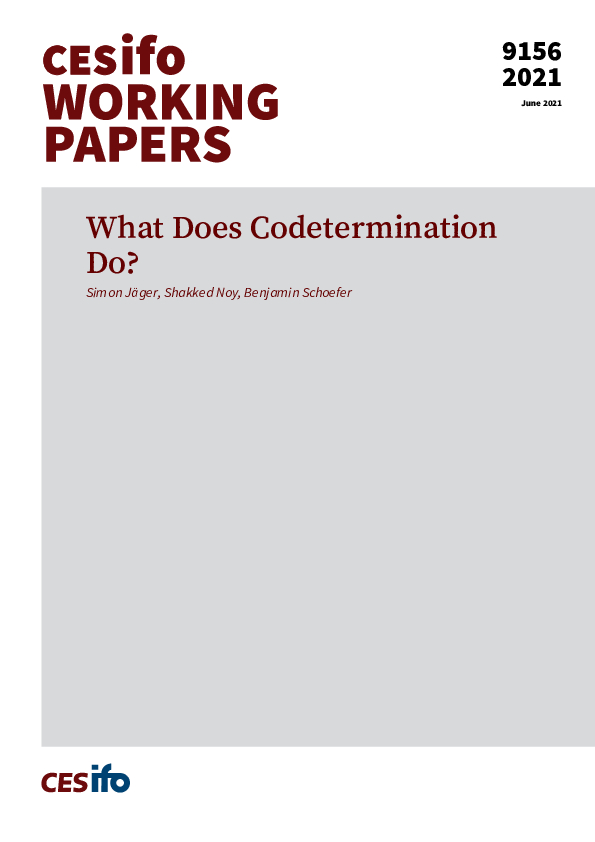What Does Codetermination Do?
CESifo, Munich, 2021
CESifo Working Paper No. 9156

We provide a comprehensive overview of codetermination, i.e., worker representation in firms’ governance and management. We cover the institution’s history, implementation, and the best available evidence on its economic impacts. We argue that existing quasi-experimental estimates suggest that codetermination has zero or very small positive effects on worker and firm outcomes at the partial-equilibrium firm level. In addition, we test for general-equilibrium effects of codetermination laws using novel cross-country event studies exploiting a series of codetermination reforms between the 1960s and 2010s, and find no evidence that codetermination laws shift aggregate economic outcomes or the quality of industrial relations. We offer three potential explanations of the institution’s limited impact. First, existing codetermination laws convey relatively little authority to workers. Second, countries with codetermination laws have high baseline levels of informal worker involvement in decision-making, independently of formal codetermination. Third, codetermination laws may interact with other labor market institutions, such as union representation and collective bargaining. We close by discussing implications of these facts for recent codetermination proposals in the United States.
Labour Markets
Fiscal Policy, Macroeconomics and Growth